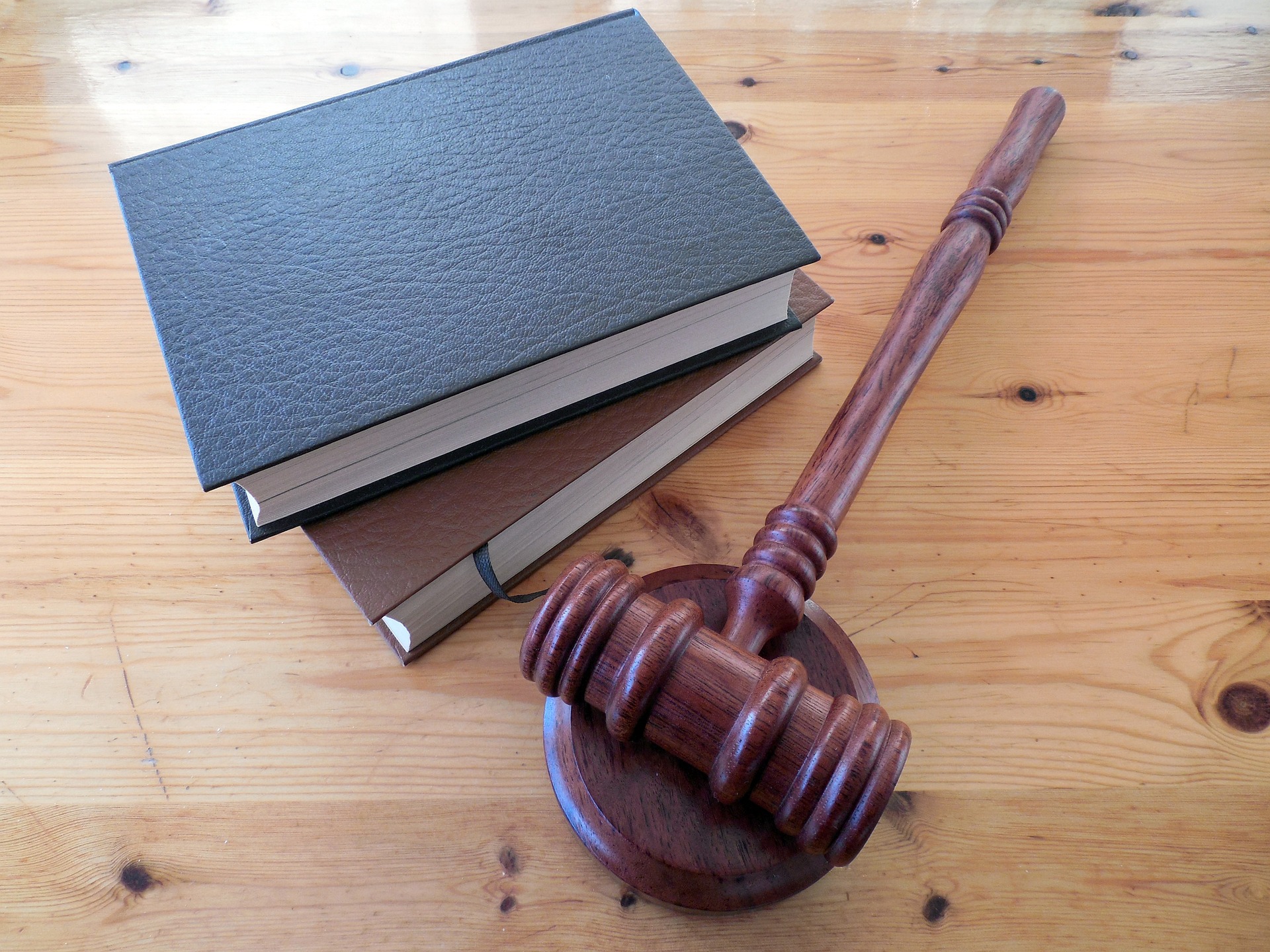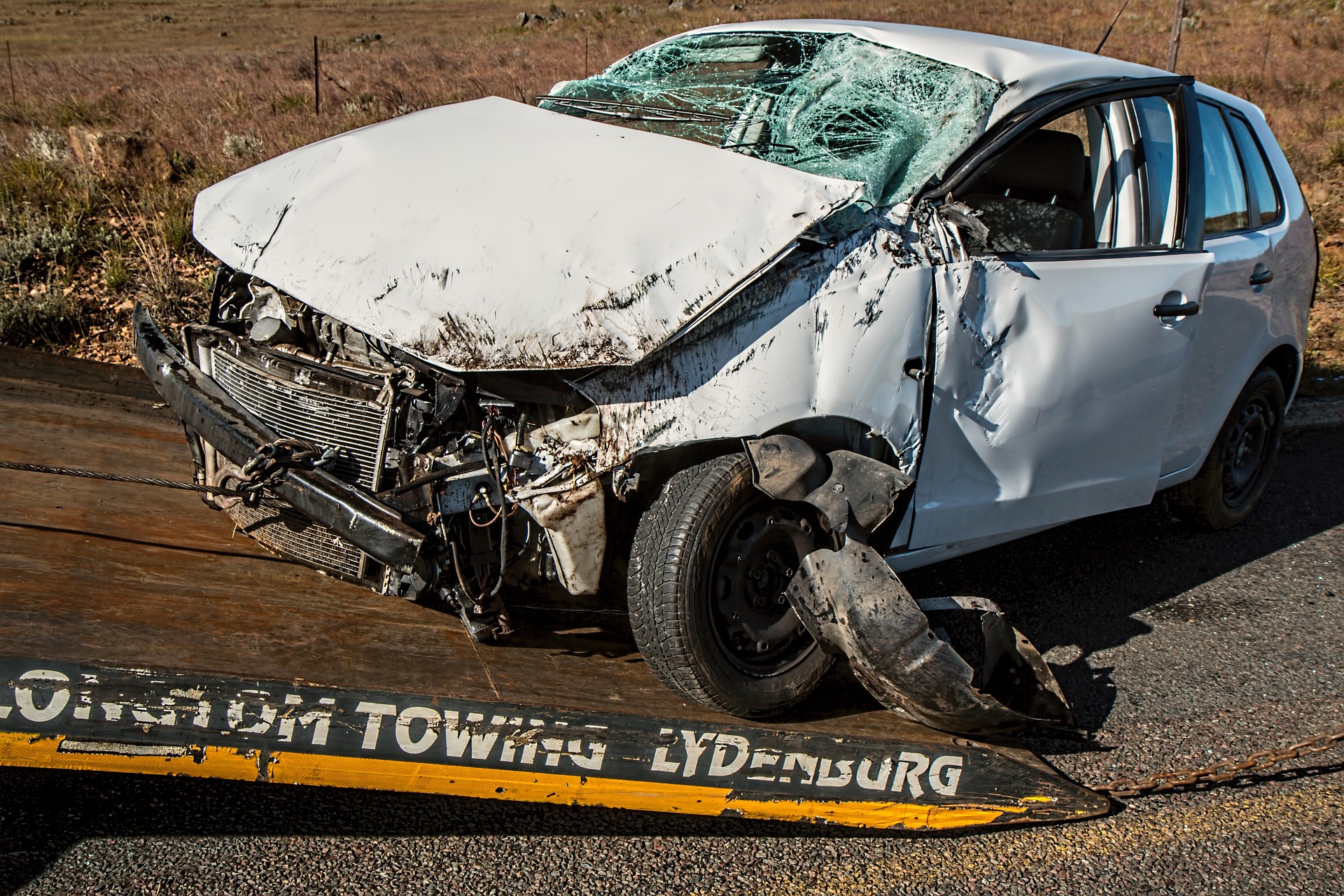If you’ve been in a car accident in Georgia, you may be entitled to recover the difference between your car’s pre-accident value and its current value after repairs. This is called a diminished value claim, and it can help you recoup some of the money you lost due to the accident.
But how do you file a diminished value claim in Georgia? What are the requirements and the process? And what can you expect from the insurance company?
In this article, I’ll answer these questions and more, based on my personal experience and research. I’ll also share some tips and tricks to help you get the most out of your claim.
Here’s what you’ll learn:
- What is a diminished value claim and why it matters
- The three types of diminished value claims and which one applies to you
- The conditions and criteria for filing a diminished value claim in Georgia
- The steps to file a diminished value claim in Georgia
- The challenges and obstacles you may face along the way
- The best practices and resources to help you succeed
Ready? Let’s get started!
What Is A Diminished Value Claim And Why It Matters
When your car is damaged in an accident, even if it’s properly repaired, its market value decreases. This is because potential buyers will see your car as less reliable, less safe, and less desirable than a similar car that has never been in an accident.
This difference between your car’s pre-accident value and its current value after repairs is called diminished value. And it can be significant, depending on the extent of the damage, the age and condition of your car, and the demand for your car model.
For example, let’s say you bought a 2018 Honda Accord for $25,000. After a year, it was worth $20,000. Then, you got into an accident that caused $5,000 worth of damage. After repairing your car, it was worth $15,000. That means your car lost $5,000 in value due to the accident. That’s your diminished value.
Now, imagine if you wanted to sell or trade-in your car. You would get $5,000 less than what you would have gotten before the accident. That’s money out of your pocket.
But here’s the good news: In Georgia, you can file a diminished value claim with the at-fault driver’s insurance company to recover that loss. Georgia is one of the few states that recognizes diminished value claims and requires insurance companies to pay them.
That means you can get back some of the money you lost due to the accident, even if you’re not planning to sell your car anytime soon.
Sounds great, right? But how do you file a diminished value claim in Georgia? And what are the challenges and pitfalls you need to avoid?
That’s what I’ll explain next.
The Three Types Of Diminished Value Claims And Which One Applies To You
Before you file a diminished value claim in Georgia, you need to understand the three types of diminished value claims: immediate, inherent, and repair-related.
Each type of claim refers to a different way that your car’s value was diminished due to the accident.
Here’s what they mean:
Immediate Diminished Value
Immediate diminished value is the loss in resale value that occurs immediately after an accident or before a vehicle has been repaired.
This type of claim is rarely used outside of court cases because it’s hard to prove and measure.
For example, let’s say you got into an accident that caused $10,000 worth of damage to your car. Before the accident, your car was worth $30,000. After the accident, but before repairs, your car was worth $15,000. That means your car lost $15,000 in immediate diminished value.
But how do you know what your car was worth before and after the accident? How do you account for other factors that affect your car’s value, such as mileage, condition, features, etc.?
Unless you have an expert appraisal or a reliable source of data to back up your claim, it’s unlikely that the insurance company will accept it.
That’s why immediate diminished value claims are usually reserved for court cases where both parties can present evidence and arguments to support their claims.
Inherent Diminished Value
Inherent diminished value is the most common type of diminished value claim in Georgia.
It refers to the loss in resale value that occurs after an accident and after repairs are made.
This type of claim applies to you if your car has been repaired but it’s still worth less than before the accident.
For example, let’s say you bought a 2018 Honda Accord for $25,000. After a year, it was worth $20,000. Then, you got into an accident that caused $5,000 worth of damage. After repairing your car, it was worth $18,000. That means your car lost $2,000 in inherent diminished value.
This is the type of claim that most people file in Georgia because it’s the easiest to prove and measure. You just need to show the difference between your car’s pre-accident value and its current value after repairs.
Repair-Related Diminished Value
Repair-related diminished value is the loss in resale value that occurs when your car is repaired poorly or incompletely.
This type of claim applies to you if your car has defects or flaws after being repaired, such as mismatched paint, visible dents, misaligned parts, etc.
For example, let’s say you bought a 2018 Honda Accord for $25,000. After a year, it was worth $20,000. Then, you got into an accident that caused $5,000 worth of damage. After repairing your car, it was worth $18,000. But then you noticed that the paint on your bumper was a different shade than the rest of your car. This made your car look worse and reduced its value even more.
This is the type of claim that you can file in addition to an inherent diminished value claim if you’re unhappy with the quality of the repairs. You just need to show the defects or flaws that resulted from the repairs and how they affected your car’s value.
The Conditions And Criteria For Filing A Diminished Value Claim In Georgia
Now that you know the types of diminished value claims, you need to know if you qualify for one in Georgia.
According to Georgia law, there are some conditions and criteria that you must meet to file a diminished value claim:
- You must not be at fault for the accident. Georgia follows a modified comparative negligence rule, which means that you can only recover damages if you’re less than 50% responsible for the accident. If you’re more than 50% at fault, you can’t file a diminished value claim.
- The other driver must have liability insurance. You can only file a diminished value claim against the at-fault driver’s insurance company, not your own. If the other driver doesn’t have liability insurance or enough coverage to pay for your claim, you may have to sue them personally or use your own uninsured/underinsured motorist coverage (if you have it).
- Your car must have a market value of at least $7,000 and be less than 10 years old. Georgia law limits diminished value claims to cars that have a significant value and are relatively new. If your car is older than 10 years or worth less than $7,000 before the accident, you can’t file a diminished value claim.
- You must file your claim within four years of the accident. Georgia law sets a four-year statute of limitations for property damage claims, including diminished value claims. This means that you have four years from the date of the accident to file your claim with the insurance company or sue them in court.
If you meet these conditions and criteria, you can proceed with filing a diminished value claim in Georgia.
But how do you do that?
That’s what I’ll explain next.
The Steps To File A Diminished Value Claim In Georgia
Filing a diminished value claim in Georgia is not as simple as filling out a form and getting a check.
It requires some research, documentation, negotiation, and persistence.
Here are the steps to follow:
Step 1: Get Your Car Repaired
The first step is to get your car repaired by a reputable mechanic or body shop.
Make sure to keep all the receipts and invoices from the repairs, as well as any photos or videos of the damage and the repairs.
You’ll need these documents to prove how much damage your car suffered and how much it cost to fix it.
Step 2: Get Your Car Appraised
The second step is to get your car appraised by a professional appraiser or an online tool.
You’ll need to get two appraisals: one for your car’s pre-accident value and one for your car’s current value after repairs.
The difference between these two values is your diminished value.
To get your car’s pre-accident value, you can use online tools such as Kelley Blue Book or NADA Guides. These tools will give you an estimate based on your car’s make, model, year, mileage, condition, features, etc.
To get your car’s current value after repairs, you can use the same online tools and adjust the condition rating to reflect the accident history. Or, you can hire a professional appraiser to inspect your car and give you a written report of its value.
The difference between these two values is your diminished value.
For example, let’s say you bought a 2018 Honda Accord for $25,000. After a year, it was worth $20,000 according to Kelley Blue Book. Then, you got into an accident that caused $5,000 worth of damage. After repairing your car, it was worth $18,000 according to Kelley Blue Book. That means your car lost $2,000 in diminished value.
Alternatively, let’s say you hired an appraiser to evaluate your car after the accident. The appraiser gave you a report that stated that your car’s pre-accident value was $20,000 and its current value after repairs was $17,000. That means your car lost $3,000 in diminished value.
As you can see, different sources may give you different values for your car. That’s why it’s important to use reliable and reputable sources and to keep copies of all the documents and reports that support your claim.
Step 3: Calculate Your Diminished Value Using The 17c Formula
The third step is to calculate your diminished value using the 17c formula.
The 17c formula is a standard calculation that most insurance companies use to determine the value of a vehicle after an accident. It’s based on a Georgia court case that established this formula as a guideline for diminished value claims.
The 17c formula has four steps:
- Multiply your car’s pre-accident value by 10%. This is the maximum amount of diminished value that your car can lose according to the insurance company.
- Multiply the result by a damage multiplier. This is a number from 0 to 1 that reflects the severity of the damage to your car. The insurance company will assign this number based on their assessment of your car. Here are some examples of damage multipliers:
- 1.00 = Severe structural damage
- 0.75 = Major damage to structure and panels
- 0.50 = Moderate damage to structure and panels
- 0.25 = Minor damage to structure and panels
- 0.00 = No structural damage or replaced panels
- Multiply the result by a mileage multiplier. This is a number from 0 to 1 that reflects the mileage of your car. The insurance company will use this number based on their own criteria or data sources. Here are some examples of mileage multipliers:
- 1.0 = 0–19,999 miles
- 0.8 = 20,000–39,999 miles
- 0.6 = 40,000–59,999 miles
- 0.4 = 60,000–79,999 miles
- 0.2 = 80,000–99.999 miles
- 0.0 = 100,000+ miles
- The final result is your diminished value according to the 17c formula.
For example, let’s say you bought a 2018 Honda Accord for $25,000. After a year, it was worth $20,000 according to Kelley Blue Book. Then, you got into an accident that caused $5,000 worth of damage. After repairing your car, it was worth $18,000 according to Kelley Blue Book.
Using the 17c formula, you would do the following calculations:
- Multiply $20,000 by 10% to get $2,000.
- Multiply $2,000 by a damage multiplier of 0.50 (assuming moderate damage) to get $1,000.
- Multiply $1,000 by a mileage multiplier of 0.8 (assuming 25,000 miles) to get $800.
- The final result is $800.
This means that according to the insurance company’s formula, your car lost $800 in diminished value due to the accident.
However, this may not be the actual or fair amount of diminished value that your car suffered.
The 17c formula has some problems and limitations that may result in a lower or inaccurate estimate of your diminished value.
Some of the common complaints about the 17c formula are:
-
The baseline starting point for the calculation is only 10%.
This means that the formula starts with an assumption of a 10% reduction in value and makes adjustments for other factors. However, this may not reflect the actual market value of your car or the actual impact of the accident on your car’s value.
-
The geographic location is not part of the equation.
This means that the formula does not account for the differences in demand and supply for your car model in different regions or markets. For example, a car that is popular and scarce in one area may have a higher value than a car that is common and abundant in another area.
-
The make and model of the vehicle are not included.
This means that the formula does not account for the differences in quality, reputation, and desirability of different car brands and models. For example, a luxury car or a sports car may have a higher value than a standard car or a family car.
-
The mileage adjustments may be weighed too heavily.
This means that the formula may penalize your car’s value too much based on its mileage, even if it’s in good condition and well-maintained. For example, a car with 80,000 miles may have a 0.2 multiplier, which means it can only lose 20% of its original value due to an accident. However, this may not reflect the actual market value of your car or the actual impact of the accident on your car’s value.
-
The damage multiplier is insufficient.
This means that the formula may not capture the full extent of the damage to your car or its effect on its value. For example, a car with severe structural damage may have a 1.0 multiplier, which means it can lose 100% of its original value due to an accident. However, this may not reflect the actual market value of your car or the actual impact of the accident on your car’s value.
Because of these problems and limitations, you may want to challenge or dispute the insurance company’s use of the 17c formula to calculate your diminished value.
You can do this by presenting evidence and arguments that support a higher or more accurate estimate of your diminished value.
For example, you can:
- Use a different method or formula to calculate your diminished value, such as the market approach or the cost approach . These methods use different factors and sources to estimate your diminished value based on market data or repair costs.
- Hire an independent appraiser to evaluate your car and give you an expert opinion on its diminished value. An appraiser can provide you with a detailed report that explains how they arrived at their estimate and why it’s more accurate than the insurance company’s estimate.
- Compare your car with similar cars that have been sold or listed for sale in your area. You can use online tools or databases to find comparable cars that match your car’s make, model, year, mileage, condition, features, etc. You can then compare their prices with your car’s pre-accident and post-accident values to show how much your car has lost in value due to the accident.
- Get testimonials from dealers or buyers who are interested in buying your car or have bought similar cars. You can ask them how much they would pay for your car before and after the accident and how much they would discount it due to the accident history. You can then use their statements as evidence to support your claim.
By using these methods and sources, you can challenge or dispute the insurance company’s use of the 17c formula and negotiate for a higher or more fair settlement for your diminished value claim.
Step 4: Write A Demand Letter To The Insurance Company
The fourth step is to write a demand letter to the insurance company.
A demand letter is a formal document that states your claim and requests compensation for your diminished value.
Your demand letter should include:
- Your name, address, phone number, and email address
- The date and location of the accident
- The name and policy number of the at-fault driver
- The make, model, year, mileage, condition, and pre-accident value of your car
- The amount and description of damage to your car
- The cost and description of repairs to your car
- The current value of your car after repairs
- The amount of diminished value that you’re claiming
The evidence and arguments that support your claim, such as appraisals, reports, testimonials, etc.
Here is a sample demand letter that you can use as a template and modify to fit your situation:
[Your name] [Your address] [Your phone number] [Your email address]
[Date]
[Adjuster name] [Insurance company name] [Insurance company address]
Re: Claim #: [claim number] Your insured: [other driver’s name] Loss date: [date of accident] Claimant: [your name]
Dear Mr./Ms. [adjuster’s last name],
I am writing to you regarding the claim referenced above. As you know, on [date of accident], my vehicle was damaged in an automobile collision caused by your insured, [other driver’s name]. The evidence clearly shows that your insured’s negligence was the direct and proximate cause of my damages.
Due to the accident, my vehicle now has a documented history of being damaged and therefore has a lower resale value. This is known as diminished value, and it is a legally recognized loss that I am entitled to recover from you.
Enclosed please find a diminished value appraisal done by an independent appraiser indicating that my vehicle has decreased in value by $[amount of diminished value] due to the accident. This appraisal is based on the following factors:
- The pre-accident value of my vehicle was $[amount] according to [source of valuation].
- The post-accident value of my vehicle was $[amount] according to [source of valuation].
- The difference between these two values is $[amount], which represents the inherent diminished value of my vehicle.
- The repairs done to my vehicle were not satisfactory and resulted in additional defects and flaws, such as [describe defects and flaws]. These defects and flaws further reduced the value of my vehicle by $[amount], which represents the repair-related diminished value of my vehicle.
Therefore, the total diminished value of my vehicle is [amount] + $[amount]).
I hereby request reimbursement for my vehicle’s diminished value in the amount of [amount] for the cost of the appraisal, as it is an additional indirect loss that I incurred due to the accident.
I am reasonable and want nothing more than to be indemnified for my loss. Please send payment within 15 days of receipt of this letter. My claim should be easy to resolve and I look forward to a prompt resolution.
If there will be any delay in the processing of my settlement, please contact me immediately. I genuinely hope that we can resolve this matter amicably and without litigation.
Sincerely,
[Your name]
Enclosures: Diminished value appraisal, repair receipts, photos of damage and defects, testimonials from dealers or buyers, etc.
Step 5: Negotiate With The Insurance Company
The fifth step is to negotiate with the insurance company.
Once you send your demand letter and supporting documents to the insurance company, you’ll have to wait for their response.
The insurance company may do one of the following:
- Accept your claim and offer to pay you the full amount that you requested.
- Reject your claim and deny any liability or responsibility for your diminished value.
- Counter your claim and offer to pay you a lower amount than what you requested.
If the insurance company accepts your claim and offers to pay you the full amount, congratulations! You’ve successfully filed a diminished value claim in Georgia and recovered your loss.
However, this is not very likely to happen. Most insurance companies will try to avoid or minimize paying diminished value claims, as they are not in their best interest.
If the insurance company rejects or counters your claim, don’t give up. You have the right to negotiate and dispute their decision.
You can do this by:
- Asking for a written explanation of why they rejected or countered your claim. You can use this information to identify and address their objections or arguments.
- Providing additional evidence or arguments that support your claim. You can use this opportunity to clarify or strengthen your case and refute their objections or arguments.
- Asking for a supervisor or manager to review your claim. You can escalate your case to a higher authority within the insurance company and request a fair and impartial evaluation of your claim.
- Hiring a lawyer or an advocate to represent you. You can seek professional help from someone who has experience and expertise in handling diminished value claims and dealing with insurance companies.
By using these strategies, you can negotiate and dispute the insurance company’s response and try to reach a favorable settlement for your diminished value claim.
Step 6: Sue The Insurance Company If Necessary
The sixth and final step is to sue the insurance company if necessary.
If you’re unable to reach a satisfactory settlement with the insurance company through negotiation and dispute resolution, you may have to resort to legal action.
You can sue the insurance company in small claims court or civil court, depending on the amount of your claim and the jurisdiction of your case.
You’ll need to file a complaint with the court, serve it to the insurance company, and prepare for a trial.
At the trial, you’ll have to present your evidence and arguments to a judge or a jury and prove that you’re entitled to recover your diminished value from the insurance company.
The insurance company will also present its evidence and arguments and try to disprove or reduce your claim.
The judge or jury will then decide the outcome of the case and award you damages if they find in your favor.
Suing the insurance company is a costly and time-consuming process that should be used as a last resort. It’s also risky, as there’s no guarantee that you’ll win or get the amount that you’re asking for.
Therefore, it’s advisable to consult with a lawyer before taking this step and weigh the pros and cons carefully.
The Challenges And Obstacles You May Face Along The Way
Filing a diminished value claim in Georgia is not an easy task. You may face many challenges and obstacles along the way that could make it harder or impossible for you to recover from your loss.
Some of the common challenges and obstacles are:
-
Proving that your car has lost value due to the accident.
You’ll need to provide credible and convincing evidence that shows how much your car was worth before and after the accident and how much it has depreciated due to the accident. This may require hiring an appraiser, finding comparable cars, getting testimonials, etc.
-
Dealing with an uncooperative or hostile insurance company.
The insurance company may try to deny, delay, or lowball your claim. They may use various tactics, such as disputing your evidence, questioning your credibility, offering you a token amount, etc. They may also try to pressure you into accepting their offer or signing a release form that waives your right to pursue further compensation.
-
Facing legal hurdles or technicalities.
The insurance company may try to use legal loopholes or technicalities to avoid paying your claim. For example, they may argue that you’re partially at fault for the accident, that you missed the deadline for filing your claim, that you violated some terms or conditions of your policy, etc.
-
Having a weak or unfavorable case.
Your case may be weak or unfavorable if you have a low-value car, a high-mileage car, a prior accident history, a poor repair job, etc. These factors may reduce or negate your diminished value claim.
-
Going through a lengthy and stressful process.
Filing a diminished value claim in Georgia can take months or even years to resolve. You’ll have to go through multiple steps, such as gathering evidence, writing a demand letter, negotiating with the insurance company, suing the insurance company, etc. You’ll also have to deal with a lot of stress, frustration, and uncertainty along the way.
These challenges and obstacles may discourage you from filing a diminished value claim in Georgia or make you settle for less than what you deserve.
However, don’t let them stop you from pursuing your rightful compensation. You have the right to recover your loss and you have the resources and options to help you succeed.
The Best Practices And Resources To Help You Succeed
Filing a diminished value claim in Georgia may be challenging, but it’s not impossible. You can increase your chances of success by following some best practices and using some helpful resources.
Some of the best practices are:
-
Act quickly and timely.
Don’t wait too long to file your diminished value claim in Georgia. You have four years from the date of the accident to file your claim or sue the insurance company. However, the sooner you act, the better. You’ll have more time to gather evidence, negotiate with the insurance company, and prepare for a possible lawsuit. You’ll also avoid losing or forgetting important details or documents that could support your claim.
-
Document everything and keep copies.
Keep a record of everything related to your accident and your claim. This includes police reports, repair receipts, appraisals, photos, videos, testimonials, correspondence, etc. Make copies of all these documents and store them in a safe place. You’ll need them to prove your claim and support your arguments.
-
Be honest and consistent.
Don’t lie or exaggerate about your accident or your damages. Don’t omit or conceal any relevant information or facts. Be honest and consistent in your statements and documents. If you’re caught lying or contradicting yourself, you’ll lose your credibility and damage your case.
-
Be polite and professional.
Don’t be rude or aggressive with the insurance company or anyone else involved in your claim. Don’t make threats or accusations. Be polite and professional in your communication and behavior. This will show that you’re reasonable and cooperative and that you respect the process.
-
Be firm and persistent.
Don’t be intimidated or pressured by the insurance company or anyone else involved in your claim. Don’t accept an offer that is unfair or inadequate. Don’t sign anything that you don’t understand or agree with. Be firm and persistent in pursuing your claim and defending your rights.
-
Seek expert help if needed.
Don’t hesitate to seek expert help if you need it. You can hire an appraiser to evaluate your car’s value, a lawyer to represent you in court, an advocate to negotiate with the insurance company, etc. These experts can provide you with valuable advice, guidance, and representation that can help you succeed.
Some of the helpful resources are:
-
Georgia Department of Law Consumer Protection Division.
This is the state agency that protects consumers from unfair or deceptive business practices. You can contact them if you have any questions or complaints about diminished value claims or insurance companies in Georgia.
-
Georgia Office of Insurance and Safety Fire Commissioner.
This is the state agency that regulates the insurance industry in Georgia. You can contact them if you have any questions or complaints about insurance policies or claims in Georgia.
-
National Association of Insurance Commissioners (NAIC).
This is a national organization that sets standards and best practices for the insurance industry in the U.S. You can use their website to find information and resources on diminished value claims and insurance issues in general.
-
Diminished Value Method.
This is a website that provides information and services on diminished value claims. You can use their online calculator to estimate your diminished value, their online tool to write a demand letter, their online database to find comparable cars, etc.
-
Diminished Value FAQ.
This is a website that provides answers to frequently asked questions on diminished value claims. You can use their website to find answers to common questions such as what is diminished value, how to calculate diminished value, how to file a diminished value claim, etc.
By following these best practices and using these helpful resources, you can improve your chances of filing a successful diminished value claim in Georgia and recovering your loss.
Conclusion
Filing a diminished value claim in Georgia is a complex and challenging process that requires research, documentation, negotiation, and persistence.
However, it’s also a worthwhile process that can help you recoup some of the money you lost due to an accident that was not your fault.
In this article, I’ve explained what a diminished value claim is and why it matters.
I’ve also explained the three types of diminished value claims: immediate, inherent, and repair-related diminished value.
The six steps to submit a diminished value claim in Georgia are also outlined, including getting your car fixed, getting it appraised, figuring out your diminished value using the 17c formula, sending the insurance company a demand letter, negotiating with them, and, if necessary, filing a lawsuit.
I’ve also discussed the challenges and obstacles you may face along the way and the best practices and resources to help you succeed.
I hope this article has been informative and helpful for you.
If you’ve been in an accident that was not your fault and your car has lost value due to the accident, don’t hesitate to file a diminished value claim in Georgia and recover your loss.
You have the right to be compensated for your loss and you have the tools and options to help you achieve it.
Good luck and happy driving!






